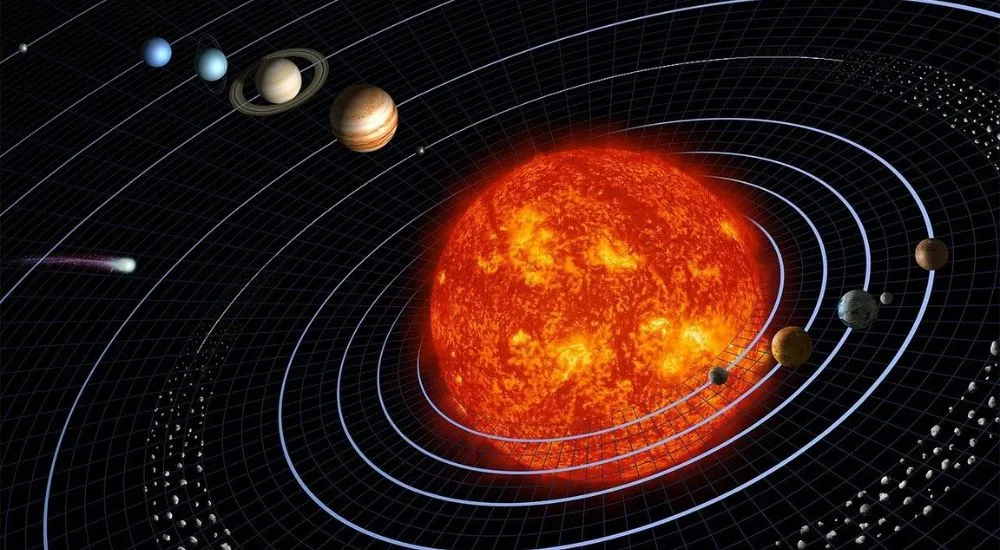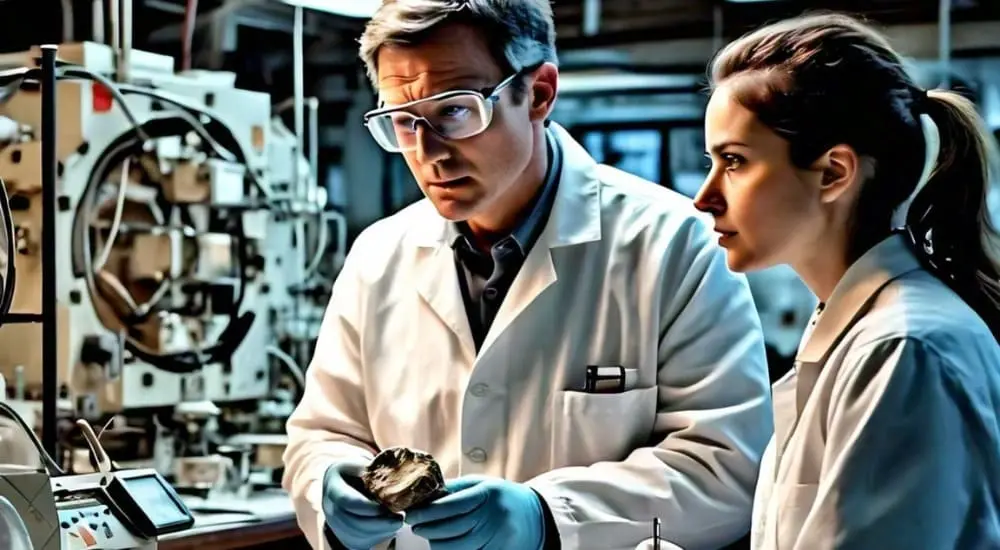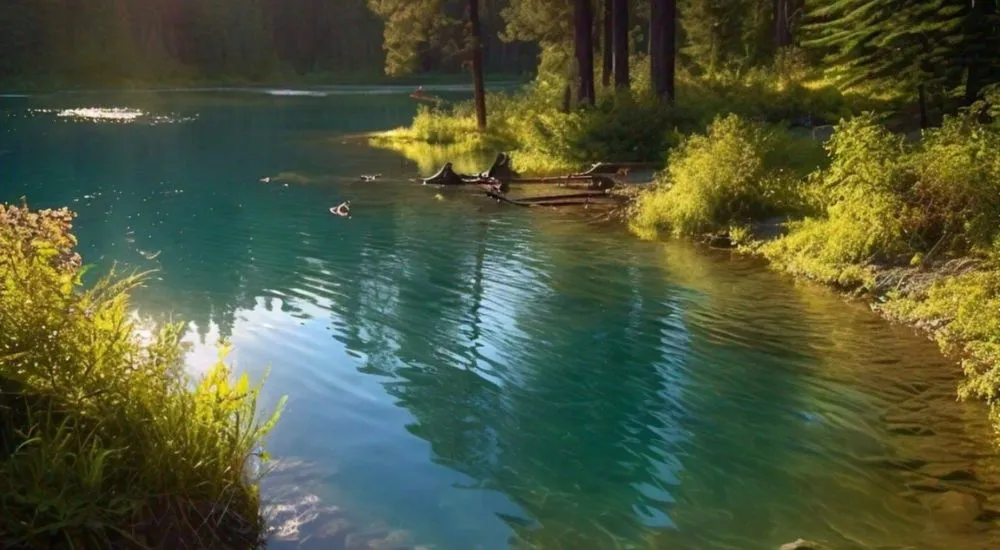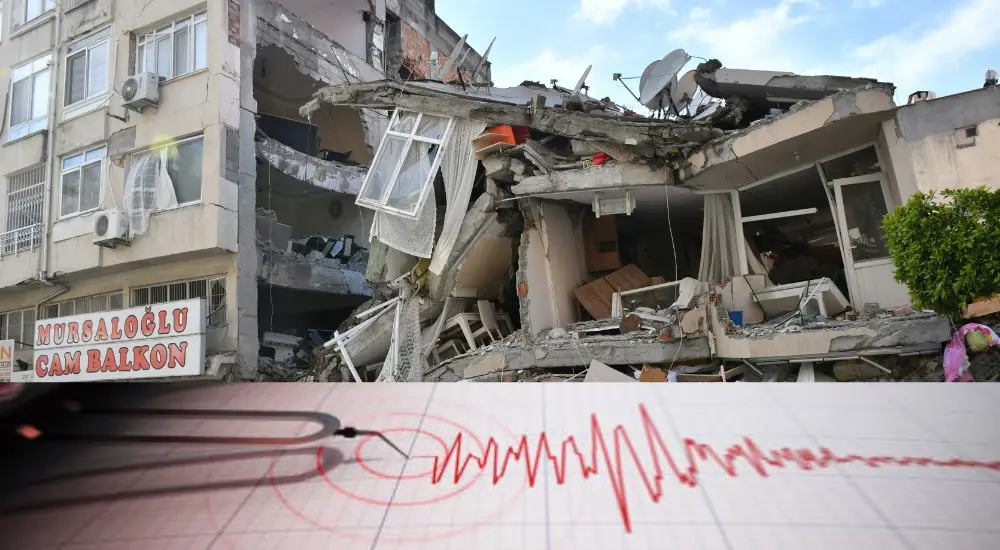Our solar system is a fascinating part of space with the Sun at its centre. Surrounding the Sun are eight planets—Mercury, Venus, Earth, Mars, Jupiter, Saturn, Uranus, and Neptune—each with unique features. The Earth is the only planet we know that supports life. The solar system also includes dwarf planets like Pluto, moons that orbit the planets, and smaller objects like asteroids and comets. Formed about 4.6 billion years ago, our solar system helps us understand how planets are made, the possibility of life beyond Earth, and where we fit in the universe.
Some important multiple-choice questions related to solar system facts are listed below. Try to answer these questions after reading enough in this topic. Also tie your answer with the given one. This practice may help you sharpen your preparation for any competitive exam along with increase your knowledge in this topic.
1. What is the largest planet in our solar system?
(A) Jupiter
(B) Saturn
(C) Earth
(D) Mars
(A) Jupiter
Explanation: Jupiter is the largest planet in our solar system. It is more than 11 times the diameter of Earth and has a mass more than 300 times that of Earth.
2. What is the smallest planet in our solar system?
(A) Venus
(B) Mercury
(C) Mars
(D) Pluto
(B) Mercury
Explanation: Mercury is the smallest planet in our solar system, with a diameter of about 4,880 km. Although Pluto was once considered the smallest planet, it was reclassified as a dwarf planet in 2006.
3. Which celestial body is classified as a “dwarf planet” in our solar system?
(A) Mars
(B) Venus
(C) Pluto
(D) Mercury
(C) Pluto
Explanation: Pluto is classified as a “dwarf planet” in our solar system. In 2006, the International Astronomical Union (IAU) redefined the definition of a planet, and Pluto did not meet the criteria, leading to its reclassification.
4. What is the hottest planet in our solar system?
(A) Venus
(B) Uranus
(C) Earth
(D) Jupiter
(A) Venus
Explanation: Venus is the hottest planet in our solar system, with an average surface temperature of 864 degrees Fahrenheit (462 degrees Celsius). It has an extremely dense atmosphere that traps heat, creating a runaway greenhouse effect, making it hotter than Mercury despite being farther from the Sun.
5. Which planet is closest to the Sun?
(A) Venus
(B) Earth
(C) Mercury
(D) Mars
(C) Mercury
Explanation: Mercury is the closest planet to the Sun, with an average distance of about 57.9 million kilo meters (36 million miles).
6. What is the coldest planet in our solar system?
(A) Venus
(B) Earth
(C) Jupiter
(D) Uranus
(D) Uranus
Explanation: Uranus is the coldest planet in our solar system, with an average surface temperature of -374 degrees Fahrenheit (-224 degrees Celsius). The reason for the lesser temperature than the farthest planet Neptune is still unknown.
7. What is the brightest planet in our solar system?
(A) Venus
(B) Saturn
(C) Jupiter
(D) Earth
(A) Venus
Explanation: Venus is the brightest planet in our solar system. It can be seen from Earth, shining brightly just before sunrise and just after sunset.
8. Which planet has the highest density in our solar system?
(A) Saturn
(B) Uranus
(C) Earth
(D) Jupiter
(C) Earth
Explanation: Earth has the highest density among the planets in our solar system. Its high density is due to its rocky composition and a relatively large iron-nickel core.
9. Which planet has the shortest day?
(A) Jupiter
(B) Mars
(C) Saturn
(D) Mercury
(D) Mercury
Explanation: Mercury has the shortest day in our solar system. It takes about 59 Earth days to complete one rotation on its axis.
10. Which planet has the longest day in the solar system?
(A) Earth
(B) Venus
(C) Mars
(D) Neptune
(B) Venus
Explanation: Venus has the longest day of any planet in the solar system, taking about 243 Earth days to complete one rotation on its axis, which is longer than its year (225 Earth days).
11. Which planet is referred to as the “Red Planet”?
(A) Venus
(B) Mercury
(C) Mars
(D) Jupiter
(C) Mars
Explanation: Mars is referred to as the “Red Planet” due to its reddish appearance. The iron oxide (rust) present on its surface gives it a distinctive reddish colour.
12. Which planet is commonly known as the “blue planet”?
(A) Neptune
(B) Uranus
(C) Earth
(D) Mars
(C) Earth
Explanation: Earth is known as the “blue planet” because approximately 71% of its surface is covered by water, giving it a distinctive blue appearance when viewed from space. This is primarily due to the reflection and scattering of sunlight by Earth’s oceans.
13. Which planet is known for its prominent Great Red Spot?
(A) Saturn
(B) Jupiter
(C) Uranus
(D) Neptune
(B) Jupiter
Explanation: Jupiter is known for its prominent Great Red Spot, which is a gigantic storm that has been observed for centuries. It is a persistent anticyclonic storm larger than Earth.
14. Which planet is known for its prominent ring system?
(A) Venus
(B) Uranus
(C) Neptune
(D) Saturn
(D) Saturn
Explanation: Saturn is known for its beautiful and prominent ring system, which is made up of countless particles of ice and dust. It is one of the most iconic features of Saturn.
15. Which planet is known for its prominent and colourful polar auroras?
(A) Earth
(B) Venus
(C) Uranus
(D) Neptune
(C) Uranus
Explanation: Uranus is known for its prominent and colourful polar auroras. These auroras are caused by the interaction of charged particles with Uranus’s magnetic field.
16. What is the main component of the Sun?
(A) Oxygen
(B) Helium
(C) Hydrogen
(D) Carbon
(C) Hydrogen
Explanation: The Sun is primarily composed of hydrogen (about 75%), which undergoes nuclear fusion to form helium and release energy, powering the Sun.
17. What is the most abundant gas in Earth’s atmosphere?
(A) Oxygen
(B) Nitrogen
(C) Carbon dioxide
(D) Argon
(B) Nitrogen
Explanation: Nitrogen makes up about 78% of Earth’s atmosphere, making it the most abundant gas. Oxygen is the second most abundant, comprising about 21%.
18. What is the primary composition of Jupiter’s atmosphere?
(A) Carbon dioxide
(B) Oxygen
(C) Methane
(D) Hydrogen and helium
(D) Hydrogen and helium
Explanation: Jupiter’s atmosphere is primarily composed of hydrogen and helium, similar to the Sun. These gases make up about 99% of its atmosphere.
19. Which planet is often referred to as Earth’s twin?
(A) Mars
(B) Venus
(C) Mercury
(D) Neptune
(B) Venus
Explanation: Venus is often referred to as Earth’s “twin” because it is similar in size, mass, and composition. However, Venus has a much thicker atmosphere and extreme surface temperatures.
20. Which planet is often referred to as both the “morning star” and the “evening star”?
(A) Mars
(B) Mercury
(C) Venus
(D) Jupiter
(C) Venus
Explanation: Venus is often called both the “morning star” and the “evening star” because it is the brightest object in the sky after the Sun and Moon and can be seen shining brightly just before sunrise and just after sunset, depending on its position in its orbit around the Sun.
















2 Comments
in Solar system MCQ question No:6 doesn’t have correct answer.
Thank you, Vasudevan, for your constructive response. It was a small typing mistake. Now, it is updated.